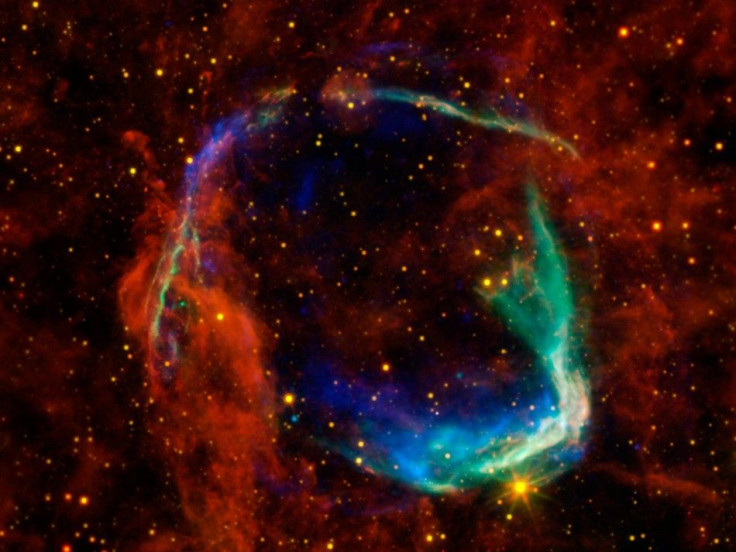Mystery of Supernova Seen in 185 Solved, Says NASA

NASA says it has solved the mystery of the identity of first recorded supernova, which was observed on Earth 1,826 years ago. The discovery was made by the Spitzer Space Telescope and Wide-field Infrared Survey Explorer, said NASA on Monday.
According to the new finding, the stellar explosion took place in a space-cavity and the shattered remains spread out in the universe.
This supernova remnant got really big, really fast. It's two to three times bigger than we would expect for a supernova that was witnessed exploding nearly 2,000 years ago. Now, we've been able to finally pinpoint the cause, said Brian Williams, an astronomer at North Carolina State University and lead author of the new study.
The results of the Spitzer Space Telescope's findings have been published in the Astrophysical Journal.
Scientists first found mention of the supernova in Chinese histories, the Book of the Later Han Dynasty. The book noted the supernova as a guest star that appeared in the sky and remained visible for about eight months in 185 A.D. Scientists later discovered that the supernova existed about 8,000 light years from Earth but no further details about the guest star could be found at that time.
In 2006, NASA named the remnant of the supernova, RCW 86. The research conducted by the Spitzer Space Telescope and Wide-field Infrared Survey Explorer now reveals that RCW 86 was a Type 1a supernova.
Modern astronomers unveiled one secret of a two-millennia-old cosmic mystery only to reveal another, said Bill Danchi, a Spitzer and WISE program scientist, at NASA's headquarters in Washington, D.C., Now, with multiple observatories extending our senses in space, we can fully appreciate the remarkable physics behind this star's death throes, yet still be as in awe of the cosmos as the ancient astronomers.
© Copyright IBTimes 2024. All rights reserved.





















